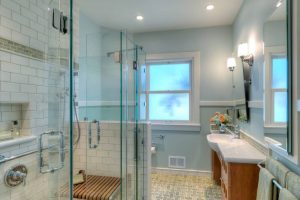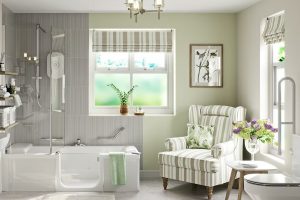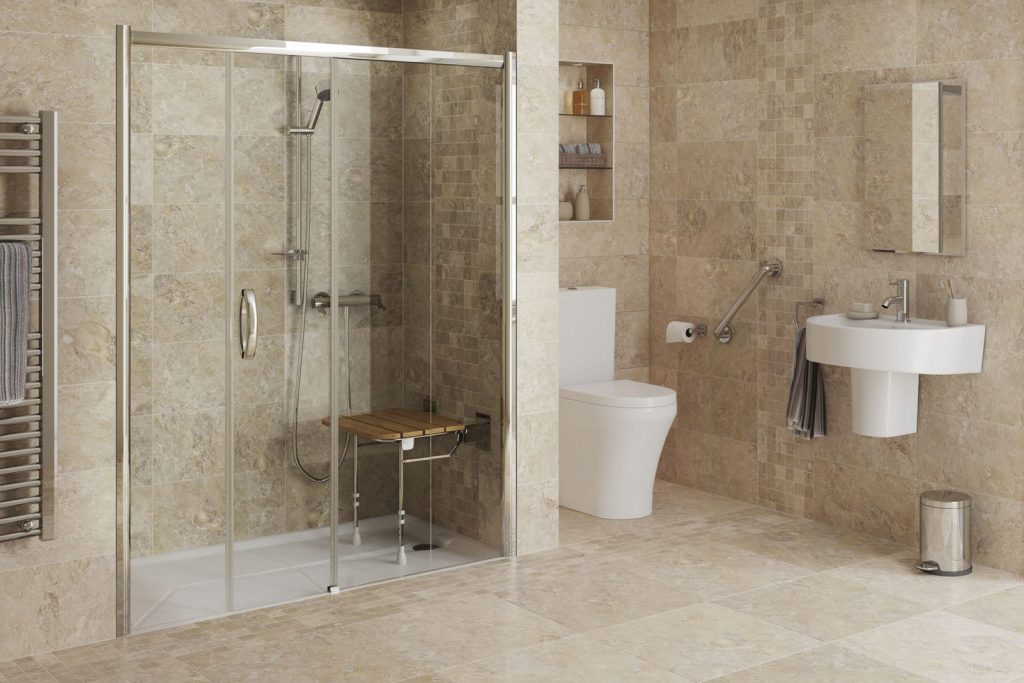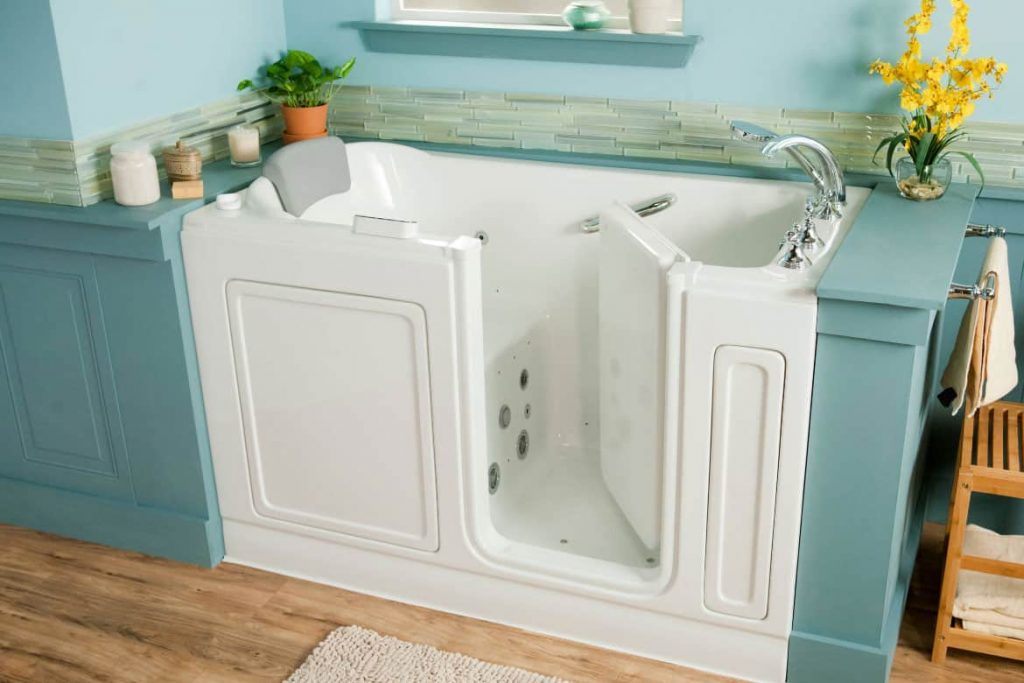Aging in place is almost universally accepted as a good idea because the benefits are so clear. It gives you the freedom and dignity that come from staying in your own home, the ability to make your own decisions, and the maintenance of friendships and community ties. A study by the American Association of Retired Persons (AARP) found that among people 65 and older, 87% wanted to age in place. The bathroom is a prime example of a space that isn’t designed for the elderly. It is too easy to slip and fall in the shower and if you have a bathtub, you might find that it is difficult for an elderly person to climb inside. Sinks and other fixtures are not convenient for people in wheelchairs and storage can become very inconvenient to people who can no longer bend and twist to look for the things they need.
Start With The Bathroom
Consumer Reports noted that 235,000 people wind up in the emergency room each year due to injuries that occur while showering, taking a bath or using the bathroom. Tub and shower bases with slip free surfaces can eliminate a majority of these injuries.
The design of the tub or shower can also come into play:
- Wide Doorways – The doorway should be a minimum of 32 inches wide. In older homes, it’s a narrow 24 inches. When the doorway is only 24 inches, a walker or wheelchair will not fit through the bathroom door.
- Stand Up Showers with a Slip Free Base – If you have a small shower, make sure to enlarge it so that there is extra room for seating and a walker.
- Curbless Shower with a Bench and Grab Bars – This doesn’t have to look as antiseptic as it sounds. Think in terms of a tiled shower area with recessed shelves at arm’s level to stop you from having to stoop down to the floor or reach up to a shower rack. Add a matching ceramic bench and grab bars that come in brushed nickel, chrome or bronze to match your faucet hardware. They will look more upscale than the white plastic hospital variety.
- Tub with a Door – It would be much easier and safer to access than a conventional tub. Unfortunately, what people fail to realize is that with most walk-in tubs, you have to maneuver very carefully through a narrow door and then get out of the way as the door swings shut. And you still have to climb over a low step. So if you’re walking or flexibility is compromised, this unit won’t be effective.
Toilets And Sinks
Perhaps most important, don’t forget about the toilet. Getting up from a seated position might take some effort, so add a grab bar and consider a taller-than-average model. Many toilet seats are lower than 17 inches from the floor, making it difficult for the elderly to stand up or sit down. If this sounds like your toilet, consider installing a new toilet that is between 17 and 19 inches high.
Here are several things you can do to make your bathroom sink more accommodating:
- Wall Mounted Sinks – If you are in a wheelchair or need to sit while using the sink, install a wall mounted sink rather than a traditional sink dropped into a vanity. This will give you space underneath the sink for your chair.
- Lower Counter Tops – These are perfect for seated people or people in wheelchairs but higher counter tops are easier to use if you stand. Maybe create split level counter tops for both options.
- Put The Fan On A Separate Switch – The fan should be on a separate switch and preferably on a timer. Fan noise can become very annoying and with the timer it is possible to turn the fan on and leave the room.
We are generally introduced to the aging process by our grandparents and the details of age-related changes become more apparent as our parents reach 70 and older. And soon we, ourselves, are thrown into an intensive course as we personally experience the full cycle of the aging process. The wise will take note of the experiences and difficulties of the generations before them and plan ahead for the second half of life. If you are considering some changes in your home design, give us a call and we will be happy to give you some suggestions for a new aging in place design.
Want to see what W.Stephens can do for you?
Contact us (859) 331-8100 today!
—
 About W.Stephens Cabinetry & Design
About W.Stephens Cabinetry & Design
1-Source Turnkey Planning and Design Services
W.Stephens Cabinetry and Design provides planning and design services for the entire home including kitchens, bathrooms, wet bars, butler pantries, libraries, home theaters, and closets. Our designers follow a project from conception to completion, assisting clients in not only space-planning and design but also guiding clients through each step of the project.
Quality Cabinet and Hardware Suppliers
We are aligned with the top cabinet, appliance, hardware, and countertop suppliers in the world.
Our Process
- Initial Client Consultation – The design process begins with a consultation at our show room or in your home to obtain the necessary information needed to design your dream kitchen, bath, or space.
- Design – We carefully design the space, keeping your desires as the foundation of our creativity.
- Feedback / Design Approval – Working with you, using your feedback to get final Design approval.
- Installation Meeting – We meet with the installers, prior to installation to go over ALL the details.
- Post Installation Follow-up – We follow-up with you to make sure everything went well during installation.
Our Designers
Our award winning designs collaboratively work together to create the perfect space for you.
>> View our designers
Our Work
View pictures of featured past projects…
>> View our work




